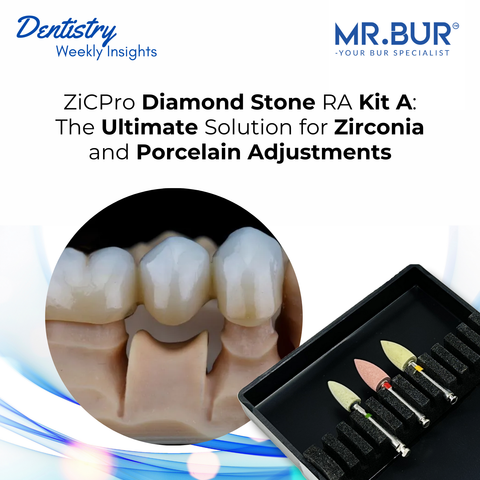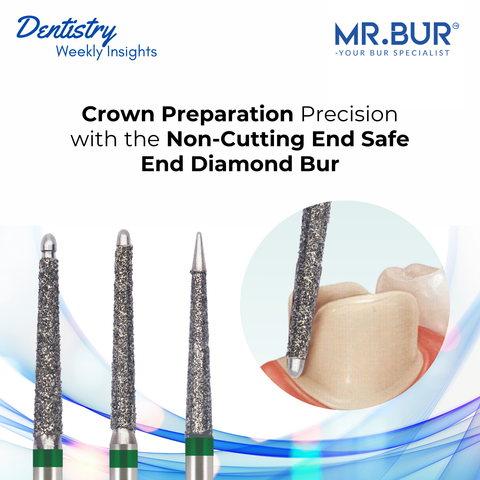As dental professionals, we frequently encounter patients needing temporary prosthetic solutions during transitional phases of treatment. Two common options, interim dentures and immediate dentures, serve distinct purposes in restorative dentistry. Understanding their indications, fabrication nuances, and clinical management is key to optimizing patient outcomes. Below, we’ll discuss the specifics of each, compare their clinical applications, and discuss the professional considerations that inform their use.
Interim Dentures: The Short-Term Workhorse
Interim dentures are removable prosthetics designed for temporary use, bridging the gap between extractions or initial treatment and a definitive restoration (e.g., conventional dentures, implants, or fixed prosthodontics). They’re typically deployed in phased treatment plans or when immediate placement isn’t indicated.
Clinical Indications
-
Post-extraction healing when staged extractions are planned.
-
Space maintenance to prevent migration of adjacent teeth.
-
Aesthetic and functional support during extended treatment timelines.
-
Trial prosthesis to assess patient tolerance or refine occlusal schemes.
Fabrication Process
-
Impressions: Impressions are captured either pre-extraction (to record existing occlusion and anatomy) or post-extraction (to reflect the current edentulous or partially edentulous state), depending on the treatment timeline and residual dentition.
-
The dental technician assesses the cast for accuracy, trimming excess material and ensuring it aligns with the dentist’s specifications (e.g., marked extraction sites or retained teeth), often using tungsten carbide cross cut burs. (E.g. Mr. Bur CVD Coated Cross Cut Standard Tungsten Carbide Bur For Plaster)
These burs provide precise cutting of gypsum, efficiently removing irregularities or overextensions without fracturing the model, resulting in a clean, reliable base for wax-up. If occlusal records are provided, the technician may articulate the casts to establish the prosthesis design, relying on the refined model to set accurate spatial relationships.
-
Materials: Constructed with cost-effective acrylic resin; teeth may be stock or minimally customized.
-
The technician fabricates the denture by waxing up the trial prosthesis on the cast, flasking it, and processing the acrylic via a boil-out and curing method. They ensure the resin is packed evenly to avoid porosity and select stock teeth that align with the patient’s functional needs, balancing cost and utility.
-
During deflasking and initial trimming, Tungsten Carbide for Acrylic Resin burs are used to remove excess acrylic flash and shape the base. Tungsten carbide burs excel at smoothing softer acrylic without clogging in a low vibration during operation.
-
Design: Prioritizes function over longevity; less emphasis on precise fit due to anticipated oral changes.
Advantages
-
Cost-efficient for short-term needs.
-
Flexible for iterative treatment stages.
-
Easily adjustable as healing progresses or additional extractions occur.
Disadvantages
-
Limited durability; prone to wear or fracture with extended use.
-
Frequent relines or remakes due to soft tissue and bone remodeling.
-
Suboptimal long-term stability compared to permanent options.
Clinical Management
Interim dentures shine in cases requiring adaptability—think partial edentulism or patients awaiting implant osseointegration. Monitor fit closely, as alveolar resorption can necessitate adjustments within weeks. Patient education on their temporary nature is critical to manage expectations.
Immediate Dentures: The Same-Day Solution
Immediate dentures are pre-fabricated prosthetics inserted on the day of extraction, providing instant tooth replacement and supporting initial healing. They’re a staple for patients requiring full or significant extractions who prioritize continuity of aesthetics and function.
Clinical Indications
-
Full-mouth extractions or extensive anterior tooth loss where aesthetics are paramount.
-
Protection of extraction sites to minimize bleeding and promote clot stability.
-
Immediate functional restoration for speech and mastication.
-
Transitional prosthesis prior to conventional denture fabrication.
Fabrication Process
-
Timing and Method: Impressions are taken pre-extraction only, capturing the patient’s dentate state to predict post-extraction contours. PVS is preferred for its detail, and casts (Type IV gypsum) are poured with high accuracy to simulate the surgical outcome.
-
The technician meticulously trims casts using Tungsten Carbide Laboratory Series Burs to refine details and simulate extraction sites, often guided by the dentist’s surgical plan. Articulation is standard, using precise occlusal records (e.g., centric relation, vertical dimension).
-
Focus: Predictive accuracy—casts must anticipate post-extraction anatomy, as no post-surgical impression is possible before insertion.
Advantages
-
Eliminates edentulous period, enhancing patient satisfaction.
-
Acts as a protective barrier, reducing postoperative complications.
-
Facilitates early adaptation to prosthetic wear.
Disadvantages
-
Fit degradation due to rapid alveolar bone resorption (typically 3-6 months post-extraction).
-
Higher initial cost due to lab-intensive pre-fabrication.
-
Potential for patient discomfort during early healing (e.g., pressure on sockets).
Clinical Management
Immediate dentures demand meticulous pre-surgical planning. Counsel patients on the need for relines or a definitive prosthesis after healing, as resorption alters fit significantly within the first 6 months. Monitor for pressure points and soft tissue irritation, especially in the initial weeks.
Interim vs. Immediate: A Technical Comparison
|
Parameter |
Interim Denture |
Immediate Denture |
|
Placement Timing |
Post-healing or mid-treatment |
Same day as extractions |
|
Primary Function |
Temporary placeholder |
Instant replacement + healing aid |
|
Expected Duration |
Weeks to months |
3-6 months, prior to conventional |
|
Cost Implications |
Lower; simpler construction |
Higher; pre-extraction lab work |
|
Adjustment Needs |
Frequent, adaptive to changes |
Relining post-resorption |
|
Ideal Scenarios |
Phased extractions, partial cases |
Full extractions, aesthetic urgency |
Professional Insights
Biological Context
Post-extraction, alveolar bone undergoes resorption, and soft tissues remodel—processes most pronounced in the first 3-6 months. Immediate dentures address this upfront, while interim dentures adapt to ongoing changes. Both require follow-up care, with conventional dentures (post-6-12 months) offering superior long-term fit after stabilization.
Fabrication Nuances
-
Interim: Quick turnaround; less lab precision needed, but fit adjustments are routine.
-
Immediate: Requires predictive accuracy; collaboration with lab technicians is critical to align pre-extraction records with surgical outcomes.
Patient Communication
-
Interim: Emphasize their role as a stopgap; prepare patients for potential remakes.
-
Immediate: Highlight the aesthetic benefit but stress the inevitability of relining or replacement due to resorption.
Transition to Long-Term Use: The Conventional Denture
Both interim and immediate dentures are temporary solutions designed to serve patients during transitional periods—whether bridging phased treatment (interim) or providing instant replacement post-extraction (immediate). Once the oral environment stabilizes, typically 6-12 months after extractions, patients are fitted with a conventional denture for long-term use. Here’s why and how this shift occurs:
Why Conventional Dentures?
Healing Completion: Post-extraction, the alveolar bone and gingival tissues undergo significant resorption and remodeling, most pronounced in the first 3-6 months and stabilizing by 6-12 months. Interim and immediate dentures accommodate these changes but lose fit over time, necessitating a permanent solution.
Optimized Fit: Conventional dentures are fabricated after healing, using impressions of the fully remodeled ridge, ensuring superior stability, retention, and comfort compared to their temporary predecessors.
Durability and Aesthetics: Designed for longevity, conventional dentures use higher-quality materials (e.g., heat-cured acrylic, premium porcelain teeth) and precise occlusal schemes, offering enhanced function and a natural appearance for years of use.
At MR. BUR UNITED KINGDOM, our strict adherence to relevant regulations guarantees our commitment to quality and safety.
Diamond Burs, Carbide Burs, Surgical & Lab Use Burs, Endodontic burs, IPR Kit, Crown Cutting Kit, Gingivectomy Kit, Root Planning Kit, Orthodontic Kit, Composite Polishers, High Speed Burs, Low Speed Burs


